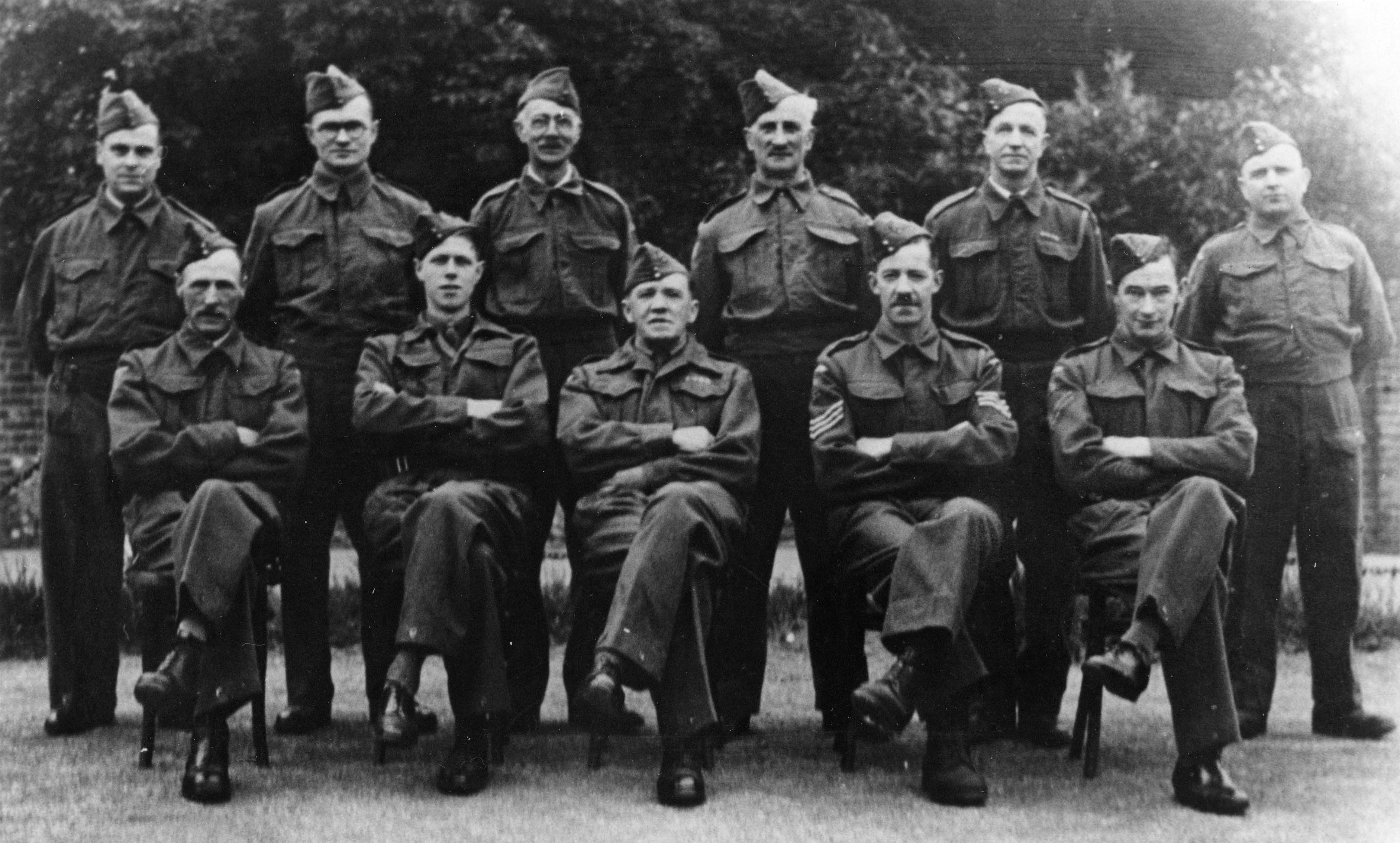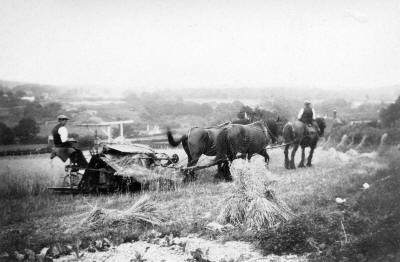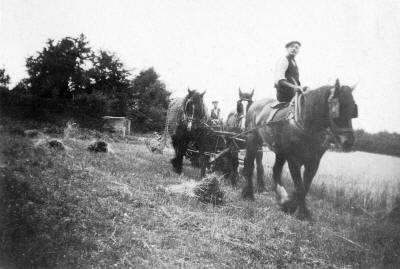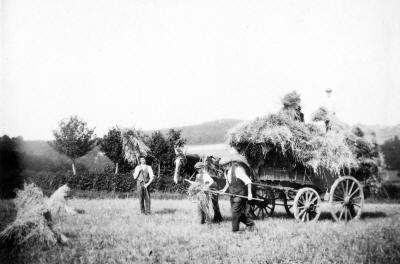A History of Frieth |
1900 - 1973 | ||||||
|
Preface |
It is difficult to try to describe life in Frieth over the last seventy years - to know where to begin or end for there is a wealth of material and I hope more people will write their reminiscences to add to this local collection (see accounts by
Mrs. Ing and Mr. E. Collier). So here are just a few points of general interest.
1900 to 1914 were golden years in Edwardian England life for the average family improved slowly year by year as the nation's wealth increased. This was a house building period and Frieth had its share of new houses. Inevitably the young men and women tended to leave the village to look for work, some to local towns, some to London and some emigrated to Canada and Australia. Around Frieth timber was cut to keep the Wycombe factories going [and our own West & Collier], bodgers and sawyers were busy in the woods, but under the Parmoor management, woods were replanted and conserved. The Great War came and went leaving us with a complete Roll of Honour of all Frieth men who served in the Forces (compiled by the schoolmaster) and a sad little list of names in the church of those who never returned. After the 1914-18 war farming fell into the doldrums, home produce could not compete with the flood of cheap food from abroad. Such farming as there was became mixed farming with a bias in the 1930's to dairy farming for the London market. [Peter Janes, whose family used to live at Willems at Spurgrove, recently (December 2012) sent me a number of photographs of farming in Frieth taken by his father in the 1920s near their house.
During the 1930's many cottages in Frieth became vacant and were sold as weekend cottages. Electric light, mains water and cesspool drainage came to the village and this encouraged one or two retired London businessmen to build houses like "Little Barlows", "Down the Lane" and "Maidencraft" (built by a retired tea planter). However, the village remained small and comparatively unknown until, with the advent of the small, popular car in the late 1930's, Londoners began to "discover" it. With World War II came mass evacuation of London and Frieth received its quota of evacuees. Frieth had its First Aid Post, a Search Light Unit in Innings Meadow and the Home Guard.  The Home Guard, Frieth c1943 Back Row: Toby Martin, Fred Barksfield, Ernie West, Percy West, Jack Sherwood, Jim Robertson Seated: Jack Shaw, Darrell Collier, George Sherwin, Ken Hobbs, Ted Barksfield [ Derek Collier wrote recently (February 2016) in the Village Society newsletter: Second Lieutenant Darrell Collier was not only a member of Frieth Home Guard but also a member of Churchill’s Secret Army. Although he was colour blind, he was a crack shot, which brought him to the attention of his superiors. As a member of the secret army he would have been expected to go into hiding if there was an invasion, then attack the Germans in hit and run attacks. In total there were only around 3,500 of these secret army members nationwide, but they were to be our last ditch defence. After intense training of how to silently kill someone, he recalled being taken to an underground bunker which was in a wood between Stokenchurch and Fingest from where he and one or two others were to sit it out after an invasion and until the Germans had arrived in the area. Luckily the Germans didn’t make it, so his training and hideout in the woods was never needed. ] A BALLAD OF FRIETH by Walter Eastman c. 1940 There's a village in the Chilterns On a steepish hill, called Frieth; In the centre of the beechwoods, Which surround it like a wreath. There are lovely little cottages; The smithy's down the Hill, With the Horse Pond, greenly covered, And moorhens when its still. There are Colliers, Browns and Leavers, Keeps and Fielders, Busbys, Ings, Muckles, Martins, Barksfields, others, These are people, not just things. There the Bartlets are the bakers, And the Lathams do the post, And the church holds those that worship, But the churchyard holds the ghosts. There's Bill Johnson at the smithy Who looked after horses' feet Before the stinking hooting cars Made noise on lane and street. I said "Apart from horses, what d'ye do?" and old Bill laughed, "I mend stoves, pots, pans and kettles, But I love iron handicraft." When I saw the things he'd fashioned, Beaten metal, burnished steel, I knew Bill, as well as blacksmith, Was an artist -and how real! Farming by necessity took a distinct turn for the better and once more pigs, chickens and bees came into their own. Parmoor House had not been lived in by the Cripps family since the beginning of the War period. During the war it was let to King Zog of Albania and his retinue - rumour had it that he kept most of the Albanian Treasury and Crown Jewels there as well! [Neil Rees notes: "It was a persistent rumour but quite untrue. Albania has no crown jewels" ] After the war most of the Parmoor Estate was sold off. Parmoor House itself is now [1973] St. Katharine's Convent. Sir Stafford Cripps was a younger brother of Mr. Seddon Cripps the present Lord Parmoor. Some woodland and farmland still belong to the family and Lord Parmoor sometimes visits Frieth and takes an interest in the village. [ Click on Parmoor in the menu bar above for more information ] Until about 1935 the only industries in Wycombe, apart from two or three engineering firms and paper factories, were all associated with the furniture trades. Then light industries began to establish themselves on the two trading estates. After 1945 more and more industries were established not only in Wycombe but in Slough and Maidenhead - more industries, more work -more work, more people - more people, more houses. Frieth grew in the post war period. A small Council Estate was built in the village and many private houses, principally at Spurgrove. The nature of employment had changed. Now comparatively few people worked on the land, farms tended to be "Hobby" farms - Frieth was no longer a farming community. Today the majority of the village's working force are commuters. The latest trend in farming seems to be back to the larger landowner. In 1968 a breakdown of the population of Frieth showed that there were about 470 people in the village (excluding Parmoor and Moor Common areas) living in 172 families. 36 families could trace their descent from ancestors living in Frieth over the past 150 years. 44 of the other families had moved in from about a seven mile radius. So 80 families could claim to be "Local". 29 families had moved in from a distance over the years. 63 families had moved into the village in the past 10 years. |



